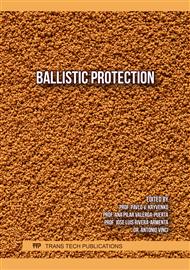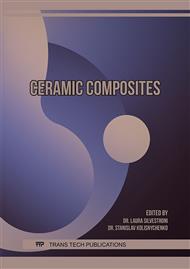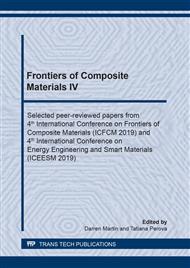p.3
p.9
p.15
p.21
p.27
p.37
p.43
p.49
p.56
Modeling and Optimization of the Fabrication of Al2O3- Based Ceramocomposites Reinforced with Carbon Nanotubes
Abstract:
The physico-mechanical properties of ceramic-matrix Al2O3-based composites are strongly influenced by the particle size of Al2O3, the presence of carbon nanotubes (CNTs), and the temperature regimes of sintering. In order to obtain the very low porosity ceramic composites with high rates of flexural strength and crack resistance, mathematical models were developed for grinding the particles of Al2O3 and spark plasma sintering of the composite. Mathematical models were based on the equations of the balance of the number of particles by size taking into account their grinding (for the grinding stage), the balance of pores in the composite by the size (for the sintering stage). The kinetic parameters of mathematical models were determined and a good agreement was reached between the calculated and experimental results. The developed models were used to determine the optimal modes of grinding and sintering stages, which made it possible to obtain, in particular, the composite Al2O3 - CNT (20 vol. %) with bending strength 540 MPa, and crack resistance 6.3 MPa·m1/2.
Info:
Periodical:
Pages:
27-33
Citation:
Online since:
June 2020
Keywords:
Price:
Сopyright:
© 2020 Trans Tech Publications Ltd. All Rights Reserved
Share:
Citation:




